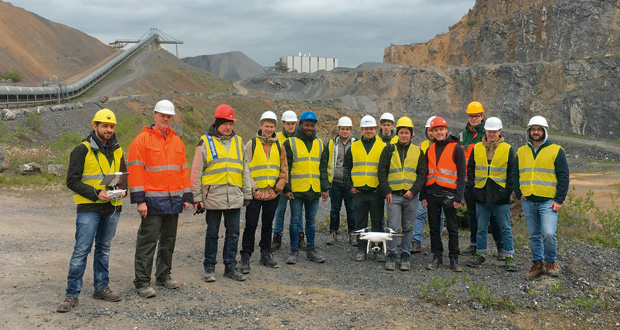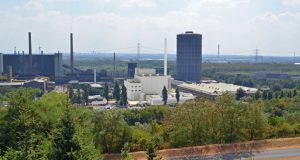Fourteen budding engineers for raw material extraction from the TH Georg Agricola University in Bochum/Germany visited WESTKALK’s Kallenhardt plant on a study trip (Figure 1). They were accompanied on their excursion by a drone, which documented the university group’s activities with a photo flight.
Nowadays, drones are used for surveying, which is required in quarries for their annual mass calculation, to enable precise calculation of the fractional interest rate for the lessors and the product stock for inventory purposes. WESTKALK does not currently use drone surveys. The THGA university groups’ excursions now regularly involve drone flight documentation, says excursion leader Prof. Albert Daniels.
As part of their quarry visit, the stu-dents learnt about the geology of the compacted Devonian lime and the large-scale technology used at the Kallenhardt plant. Even three years after commissioning, the crushing plant, with its combination of drum screening and impact mill, is unique in Germany. The project was funded by the Federal Environment Ministry.
The WESTKALK pilot project contributes to an improved use of deposits and therefore to a significantly reduced land use – as the Federal Environment Ministry stated in a press release at the time. The argillaceous substances are first crushed in a drum screen and then filtered out. The pre-screening material produced is cleaned in the stone washing plant to process the limestone it contains into marketable products. Owing to the improved separation of valuable rock and waste material, blasted raw material heavily mixed with clay can be transported to the crushing plant. That reduces the proportion of unused valuable rock on the spoil tip from around 30 to less than 5 %. The resulting increase in the usage rate of the deposit leads to an almost optimal raw materials efficiency. (WESTKALK/Si.)



